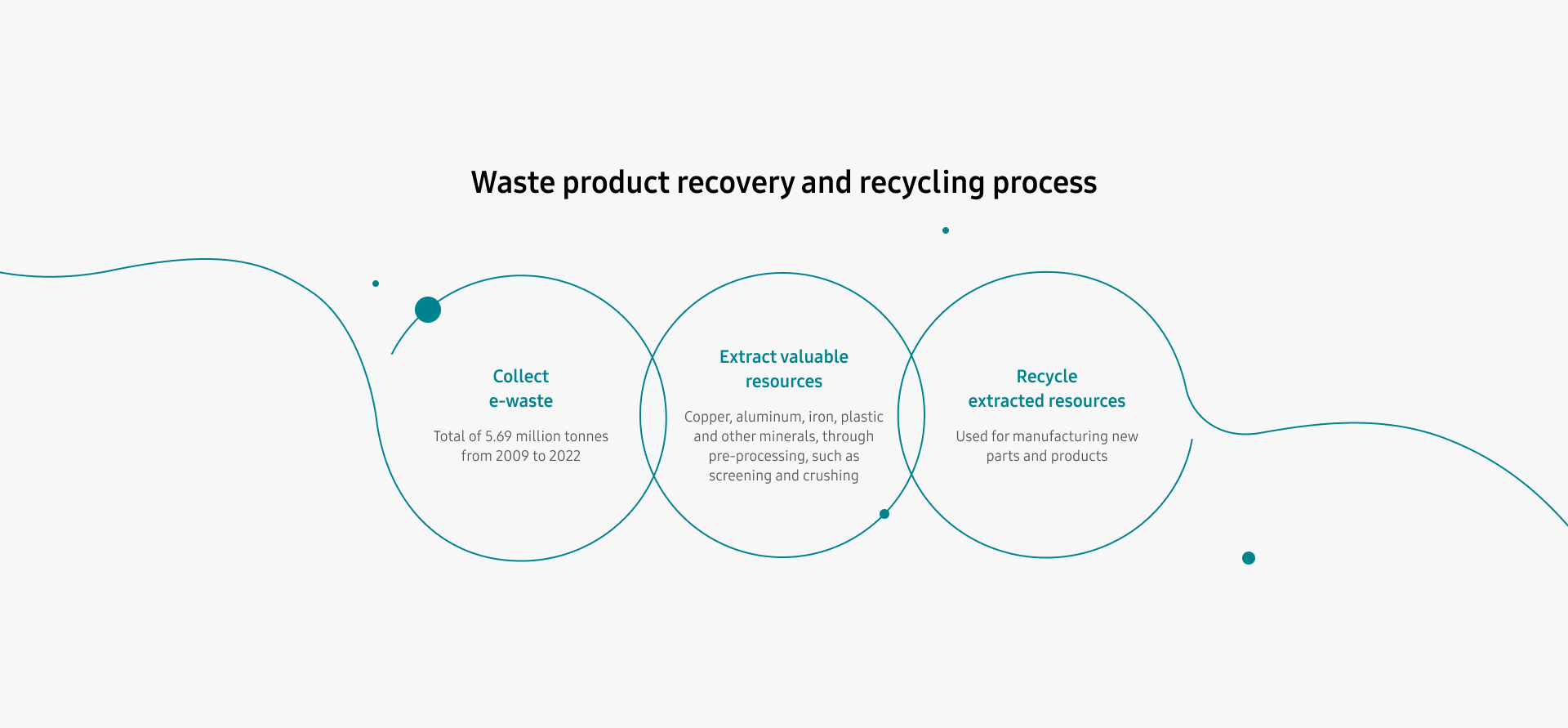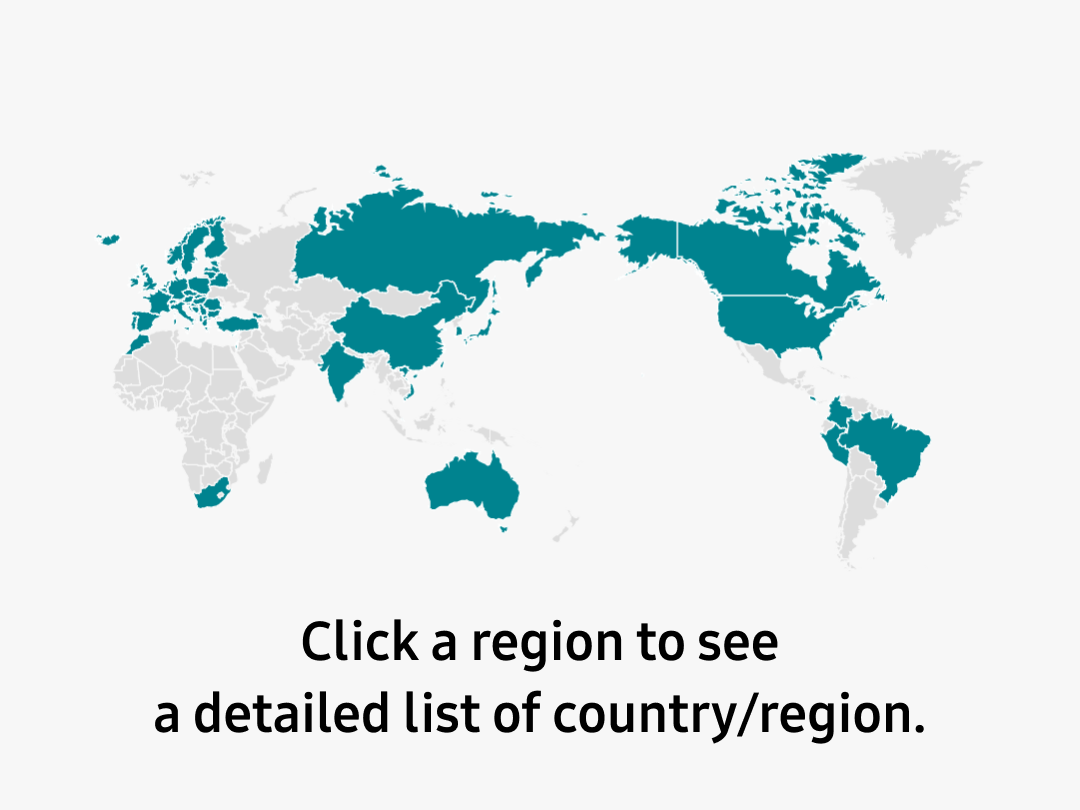Circular Economy


Sourcing
Production
Distribution
Using
Recycling
Longer life for the product
Even longer life for the material used
in the product.
We aim to create a more sustainable resource cycle by using
recycled materials and researching methods to extract and
re-use resources from e-waste.


E-waste, born again with
technology
Samsung Electronics continuously seek to expand the application of recycled and recyclable materials to our products. We developed innovative technology to recycle discarded fishing nets, a type of plastic debris that threatens the marine environment, and continue to diversify the types of recycled and recyclable materials used in our products, including recycled aluminum and glass, to improve resource circularity.
Plastic recycled from discarded fishing nets has been applied to smartphones including Galaxy S22 series, S23 series, Z Fold4/Flip4, Buds2 Pro, Galaxy Book3 series, remote control for our lifestyle TV models (inner parts and bracket), Jet Cordless Stick Vacuum 4.0 series (filter), and the attachable Less Microfiber Filter.
We also used recycled aluminum in the Galaxy S23 series and the exterior of the Bespoke Infinite refrigerator line, while we continue to expand the application of recycled glass.
We are significantly expanding the application of recycled resins in plastic parts used in products — 50% of plastic parts by 2030 and 100% plastic parts (by weight) by 2050.
In 2022, we used 98,826 tonnes of plastic with recycled resin, which marks a three-fold increase compared to the previous year and is equivalent to 14% of our total plastic use.
Unit: 10,000 tonnes 2019: Usage for the current year 3.1 Total cumulative usage 24.5 2020: Usage for the current year 3.1 Total cumulative usage 27.6 2021: Usage for the current year 3.3 Total cumulative usage 31.0


The use of recycled packaging
materials by product category
Get more out of our products


We continue to increase the lifespan of our products because longer lifecycles often mean fewer resources consumed and less carbon emitted.
To reduce the environmental impact of our products, we study and apply ways for our customers to use our products longer.
Bringing new life
to EOL (end-of-life) products
*Cumulative from 2009
*Cumulative from 2009
When we switch to a new product, where does the used product end up?
If you think about it, products made from various raw materials are a complex mix of resources. Our e-waste product collection and recycling process allows for e-waste to become ingredients for new products.
From 2009 to 2022, we collected 5.69 million tonnes of waste electronics worldwide through waste product collection systems in effect in more than 50 countries.
By 2030, we plan to expand the waste production collection system to more than 180 countries that sell products with the plan to collect 10 million tonnes, and a plan to collect 25 million tonnes of e-waste by 2050.
Unit: 10,000 tonnes 2019: Collected amount (current year) 49 Cumulative collected amount 403 2020: Collected amount (current year) 51 Cumulative collected amount 454 2021: Collected amount (current year) 53 Cumulative collected amount 507


